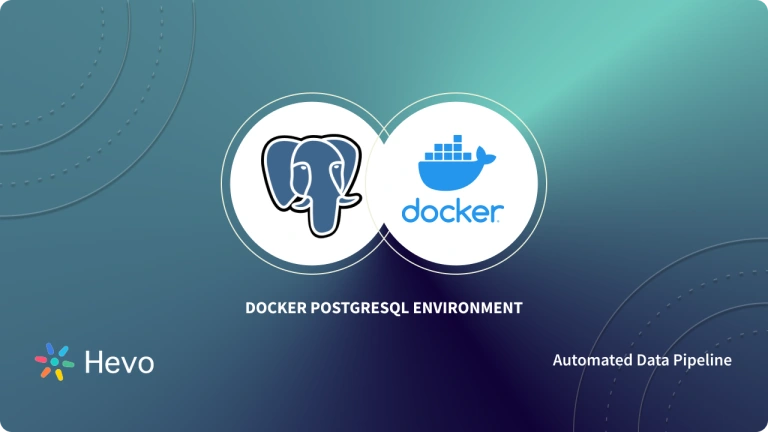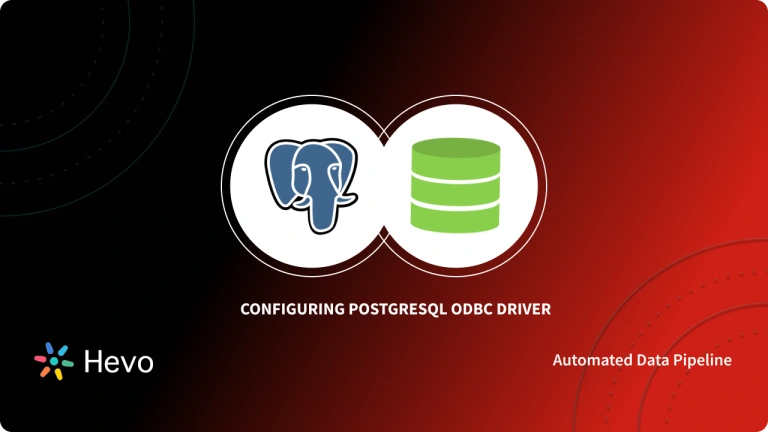The R programming language is often used by Data Scientists and corporate executives to create sophisticated Analytics, Statistics, and Visualisations. The open-source R is used all around the world for anything from online trend mapping to constructing financial models that help drive our economies and societies. This is why, to extend their operations, companies are hiring R specialists with experience as they recognize the importance of these skills in the success of their business.
R is often used for ETL processes since it provides an interface for databases such as Oracle, PostgreSQL, SQLite, SQL Server, and many more. In this article, you’ll learn how to use RPostgreSQL to interact with the PostgreSQL database using the R language. In addition, you will learn different RPostgreSQL methods and their description. So, before you get started let’s understand the key features of R & PostgreSQL and understand what is RPostgreSQL.
Table of Contents
What is R?
R is a programming language and environment for statistical and graphical computation. It’s a GNU project that’s comparable to the Bell Laboratories-developed S language. R was created by Robert Gentleman and Ross Ihaka of the University of Auckland’s Statistics Department, who were known as “R & R“. Years of cooperation from individuals all across the world have culminated in the present version of Open R.
R is a procedural programming language that divides a problem into stages, processes, and subroutines. This makes it simple for R to convert data into useful statistics, graphs, and statistical learning models for predictions and insights.
R comes with a set of packages by default, but there are many more that can be installed to expand R’s capabilities. Experts in every discipline have made tools, applications, and code available for R free online, whether you’re using R to optimize portfolios, analyze genetic sequences, or estimate component failure times.
Key Features of R
R is a cutting-edge programming language used by millions of analysts, researchers, and companies like Facebook, Google, Bing, Accenture, and Wipro to address difficult problems. Let’s explore some of the powerful features it offers.
- Open Source: You can use R for free because it is an open-source programming language. You won’t have to pay any fees to view and use its source code since it has a public license. You can even contribute to its community and improvements.
- Detailed Analysis & Visualization: Tidyverse makes R a one-stop shop for data analysis by automating the creation of Data Science Applications with many packages. It can be used to manipulate data and plot graphs and also includes R packages such as Tidyr, Dplyr, and Ggplot2.
- Robust IDE: The R and RStudio Integrated Development Environment (IDE) is well-designed and supports a variety of scripting languages, including Python, that are frequently used in the Data Science field. The Syntax-Highlighting Editor in RStudio aids code execution, documentation, and data visualization by making graphics more accessible.
- Interpreted Language: R is an Interpreted Language. Moreover, being a vector language, anyone can add functions to a single vector without generating a loop.
- Interactive Web-Based Dashboards: Developers can use R Packages to create Web-Based Dashboards to improve collaboration. For example, the Shiny package allows users to create Interactive Web Applications (IWAs) directly using R. It enables anyone with little or no technical knowledge to develop dashboards and share them with their team.
To learn more about R, visit the R homepage here.
What is PostgreSQL?
PostgreSQL is a highly robust Relational Database Management System (DBMS) that has been developed by the open-source community for more than two decades. It is the principal database for many web services, as well as mobile and analytics applications. SQL (relational) and JSON (non-relational) queries are both supported. You can give a read to Insert JSON into PostgreSQL to learn more about JSON and PostgreSQL.
Key Features of PostgreSQL
Apple, Cisco, Etsy, Red Hat, Spotify, and many more well-known companies utilize PostgreSQL. Let’s take a look at some of the features that make PostgreSQL, also known as Postgres, so popular among businesses:
- Object-Relational DBMS: PostgreSQL is an Object-Relational Database Management System (ORDBMS) that can handle both Object-Oriented and Relational Databases.
- Multiversion Concurrency Control: To manage concurrent requests, Postgres employs multi-version concurrency control. This creates a “snapshot” of the Database for each transaction, allowing changes to be made without affecting other transactions. This eliminates the need for reading locks and ensures that the Database adheres to ACID requirements.
- ACID-Compliant Database: PostgreSQL’s Write-Ahead Logging makes it a highly fault-tolerant Database. It features a built-in community support network. PostgreSQL is an ACID-compliant Database that supports foreign keys, joins, views, triggers, and stored procedures.
- Large Support Network: PostgreSQL has a vibrant community that is always eager to assist. Private, third-party help services are also available. The community updates the Postgres platform through the PostgreSQL Global Development Group.
To explore more key features and other details of PostgreSQL, visit here.
What is RPostgreSQL?
RPostgresSQL is a Database Interface(DBI)-compliant Postgres database interface. It allows you to conduct a wide range of SQL operations against PostgreSQL databases quickly and effectively. C++ and Rcpp were used to rebuild it. This package serves as a Database Driver as well as a DBI interface.
RPostgreSQL was created as part of the Google Summer of Code 2008 program. The RPostgreSQL package can be found on CRAN(Comprehensive R Archive Network). RPostgreSQL’s key features include:
- All DBI functionalities are implemented.
- Support for transaction management has been improved.
- Type mapping for dates and timestamps.
Read along the next section, to learn the steps to set up R & PostgreSQL workflow using RPostgreSQL.
Unlock the full potential of your financial data by using Hevo for integration. Within minutes, you can seamlessly connect PostgreSQL to your chosen destination, automating your data workflows and gaining real-time insights.
Why Integrate PostgreSQL with Hevo?
- Automated Data Sync: Automatically transfer data from PostgreSQL to your preferred destinations without manual intervention.
- Real-Time Data Flow: Keep your financial data up-to-date and consistent across all platforms.
- No-Code Platform: With Hevo’s intuitive interface, you can easily set up and manage your data pipeline with no technical skills required.
Join 2000+ Happy Customers
Industry leaders such as Thoughtspot trust Hevo for its reliable data integration solutions.
Steps to Connect R & PostgreSQL using RPostgreSQL
RPostgreSQL is a sophisticated PostgreSQL driver to interact with PostgreSQL using the R programming language. In this section, you will learn the key steps to connect R & PostgreSQL using RPostgreSQL. Follow the steps below to get started:
Step 1: Install the RPostgreSQL Package
The RPostgreSQL package is accessible on CRAN(Comprehensive R Archive Network) and can be installed in the IDE with the following command:
install.packages('RPostgreSQL')Step 2: Enter your PostgreSQL Credentials
After installing the RPostgreSQL package in the RStudio IDE, you can now define your PostgreSQL credentials using the script below:
dsn_database = "<database name>" # Specify the name of your Database
# Specify host name e.g.:"aws-us-east-1-portal.4.dblayer.com"
dsn_hostname = "<your host name>"
dsn_port = "<port>" # Specify your port number. e.g. 98939
dsn_uid = "<your user id>" # Specify your username. e.g. "admin"
dsn_pwd = "<your password>" # Specify your password. e.g. "xxx"Step 3: Establish R & PostgreSQL Connection using RPostgreSQL
After entering your PostgreSQL database credentials, it’s time to connect the Database with R using RPostgreSQL. You can do so, using the following script given below:
tryCatch({
drv <- dbDriver("PostgreSQL")
print("Connecting to Database…")
connec <- dbConnect(drv,
dbname = dsn_database,
host = dsn_hostname,
port = dsn_port,
user = dsn_uid,
password = dsn_pwd)
print("Database Connected!")
},
error=function(cond) {
print("Unable to connect to Database.")
})Step 4: Run and Test Queries using RPostgreSQL
Now, let’s test if your PostgreSQL is connected with R. So, create a table named ‘Employees’ and insert some employee details as shown below:
dbSendQuery(connec, "DROP TABLE IF EXISTS Employees")
dbSendQuery(connec, "CREATE TABLE Employees(Id INTEGER PRIMARY KEY, Name VARCHAR(20))")
dbSendQuery(connec, "INSERT INTO Employees VALUES(1,'Aakash')")
dbSendQuery(connec, "INSERT INTO Employees VALUES(2,'Diksha')")
dbSendQuery(connec, "INSERT INTO Employees VALUES(3,'Jaskaran')")
dbSendQuery(connec, "INSERT INTO Employees VALUES(4,'Arsalan')")
dbSendQuery(connec, "INSERT INTO Employees VALUES(5,'Argha')")
dbSendQuery(connec, "INSERT INTO Employees VALUES(6,'Anuj')")
dbSendQuery(connec, "INSERT INTO Employees VALUES(7,'Noor')")
dbSendQuery(connec, "INSERT INTO Employees VALUES(8,'Anirudh')")You can now execute a query to extract data from the newly constructed table into a dataframe and display the dataframe’s contents as shown below:
df <- dbGetQuery(connec, "SELECT * FROM Employees")
dfGreat Work! You have finally connected your PostgreSQL database with R using RPostgreSQL. Once you’re finished experimenting with your PostgreSQL and R connection using RPostgreSQL, you can terminate the connection using the following command dbDisconnect(connec).
What are the RPostgreSQL Methods?
Now that you have a hands-on experience with RPostgreSQL, let’s discuss some of the common RPostgreSQL functions that you can experiment with. The following table lists down some of the RPostgreSQL methods along with their description:
| RPostgreSQL Method | RPostgreSQL Method Description |
| dbDriver(drv, …) | Instantiates the driver object. |
| dbConnect(drv,…) | Creates and establishes a connection to the database that the driver drv implements. User, password, dbname, host, and other information should be supplied in the connection string. |
| dbGetInfo(dbObject, …) | Returns dbObject details such ad driver, connection, or resultSet. |
| dbSendQuery(con, statement, …) | Queries one statement to the database. |
| dbGetQuery(con,statement, …) | In one operation, it submits, executes, and extracts output. |
| fetch(rs,n, …) | Retrieves next n entries from the resultSet. |
| dbRemoveTable(con, TableName, …) | Removes the table specified and returns a value if the operation succeeded or not. |
| dbReadTable(conn, name, …) | Imports the remotely stored data in the table name on connection conn. |
| dbWriteTable(conn, name, value, …) | Writes the contents of the dataframe value into the table name specified. |
| dbDisconnect(con, …) | Terminates the connection. |
| dbUnloadDriver(drv,…) | Releases all of the driver’s resources. |
You can refer to the RPostgreSQL Documentation to explore the RPostgreSQL methods in detail.
Conclusion
Reading the above post, helped you explore the capabilities and features of R and PostgreSQL. You explored the steps to connect the PostgreSQL with R using the RPostgreSQL package. In addition, you discovered various RPostgreSQL methods and their description. You can not only connect your R with PostgreSQL but also with other databases such as SQLite, SQL Server, and Data Warehouses such as Google BigQuery, and Snowflake. You can refer to Snowflake R/RStudio Integration to learn more.
However, as a Developer, extracting complex data from a diverse set of data sources like Databases, CRMs, Project management Tools, Streaming Services, and Marketing Platforms to your PostgreSQL Database can seem to be quite challenging. This is where a simpler alternative like Hevo can save your day!
Hevo Data is a No-Code Data Pipeline that offers a faster way to move data from 100+ Data Sources such as PostgreSQL and other 40+ Free Sources, into your Data Warehouse using R to be visualized in a BI tool. Hevo is fully automated and hence does not require you to code.
FAQ
Difference between RPostgres and RPostgreSQL
RPostgres is a more modern and faster package for connecting R to PostgreSQL databases, supporting DBI and newer PostgreSQL features, while RPostgreSQL is older and less efficient, with limited support for some newer features.
How to access PostgreSQL database in R?
To access PostgreSQL in R, use the RPostgres package with the following code:
library(RPostgres)
conn <- dbConnect(RPostgres::Postgres(), dbname = “your_db”, host = “localhost”, user = “your_user”, password = “your_password”)
How to use convert in PostgreSQL?
In PostgreSQL, convert can be used to change the encoding of strings with convert(string, src_encoding, dest_encoding) or use CAST to convert data types, e.g., CAST(column AS INTEGER).



